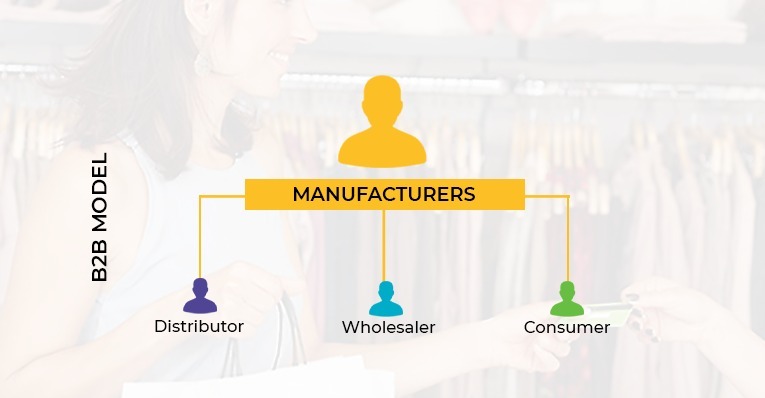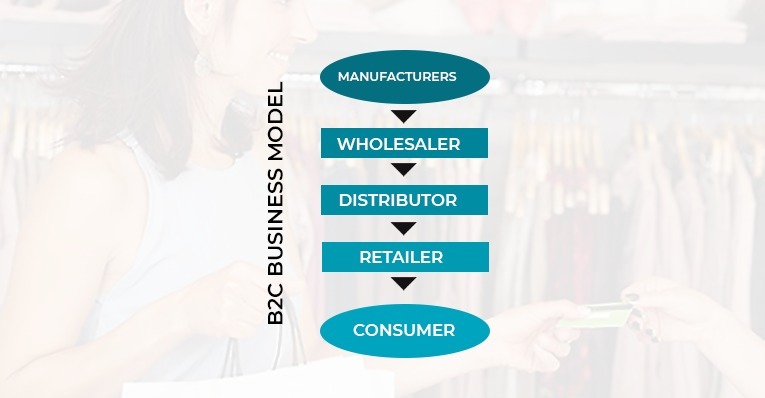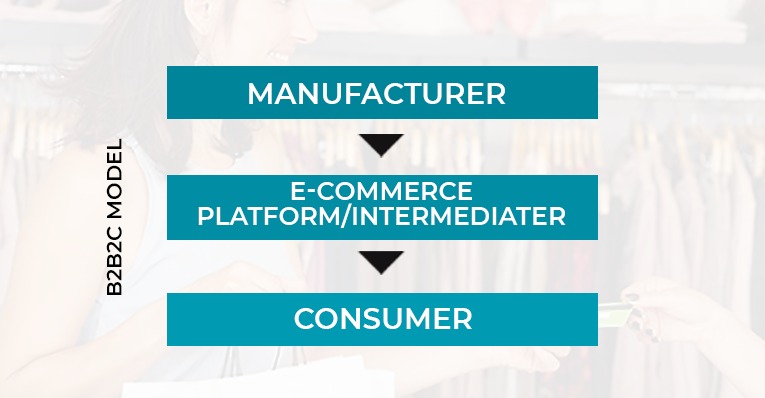In the last decade, Dubai has established itself as a hot destination for business opportunities. Factors like minimal tax rate, free zones, low import tariffs combined with Dubai’s strategic location as a bridge between the east and the west, places UAE at 16th position among 190 countries. UAE is the strongest performer in the Middle East & North African Region, according to World Bank report.
With the recent amendment of the CCL law in UAE that allows 100% foreign ownership in 13 sectors, there are endless opportunities for international trade.
There are primarily two traditional business models:
1. B2B (Business-to-Business)
2.B2C (Business-to-Consumer). With technology and transparency there is another model that has emerged in the recent days, which is
3. B2B2C (Business-to-Business-to-Consumer)
Let’s first look at the B2B business model B2B.

The transactions are not restricted between manufacturers and retails or wholesalers offline but these days B2B ecosystem is also popular among the ecommerce businesses.
The main advantages of B2B are that it guarantees large scale sales if you’re a manufacturer. Since the business cycle is short the time t
here is more efficiency and productivity; time taken to manage their ERP for operations is far lesser. B2B have better opportunities to target a new market because the retailers sell it to reseller.
While the model is recommended for manufacturers who generate a high turnover, it is also important to take into consideration the capacity of your workforce to deliver within the established time. Since you’re a manufacturer and you primarily depend on few trustworthy clients, missing the committed deadline results in serious implications on the business.
Also, since B2B purchases are usually in large quantities the buyer performs a deep market research and as a manufacturer you need to provide the best possible quotes in the market to win the buyer. The buyer influences the
There is high scope for negotiation in the
B2B market as it primarily involves large volume and high transactional value. The buyer holds excess power to dictate the price of the product.
Some of the popular b2b business categories include industrial parts, office supplies, hardware supplies, F&B supplies, textile supplies and stationary supplies.
Let’s look at B2C business model, where the business directly sells to the consumers.
In this model, the wholesaler, distributors and retailers are intermediaries between the manufacturer and consumer.
(https://www.tutorialspoint.com/e_commerce/e_commerce_b2c_mode.htm)

In B2C model in ecommerce, the business has a website where the end consumers can directly purchase from the business.
B2C has high volume of customers but with lower revenue especially in case of an online platform and most times has a shorter sales cycle with their products places and promoted on credible ecommerce sites like Amazon, Walmart, Target etc.
By choosing B2C as a manufacturer you will be able to curb excessive price markups on your product. Some large ecommerce companies like have their inhouse delivery, which reduces the overheads significantly in the long run.
The B2C model is typically adapted by small and mid-size manufacturers planning to sell their products directly to the end consumer via e-commerce platform. While there are several advantages like reaching a large audience via ecommerce site there is cut-throat competition to survive in the market and low profit margin to survive competition sometimes leads to selling at a margin lower than B2B businesses. Also, online marketing budget tends to get expensive many times.
There is another business model that has gained popularity in the recent times, B2B2C (Business to Business to Consumer model)
B2B2C (business to business to consumer) is an e-commerce model where businesses access customers through another business but are able to interact directly with customers under their own brand.

B2B2C model is where businesses reach the end consumers through another business. For instance, you visit Lulu Hypermarket you buy products that are not just manufactured by Lulu but also other brands who use Lulu as their distribution channel. A classic example of this model are restaurants that use food aggregators to sell their end products.
On ecommerce platform, a classic example of B2B2C includes Instacart, which has many grocery stores listed on their platform.
The main benefits of B2B2C model accessibility to a large audience, benefit via big brand/ecommerce credibility. Although, this model can be expensive for small businesses as the commission charged for product distribution can be high.
When entering business trading it is important to stay up to date with these two distribution systems, free shipping and drop shipping.
If you’re a retailer and you place orders with the manufacturer only if you receive an order from the consumer and the manufacturer directly ships the order on your behalf, this form of distribution is called drop shopping. This form of supply chain requires faith in your manufacturer to ship quality products in a timely manner.
On the other hand, if the distributor invests on a warehouse and holds stock, complies with product regulations, and ships the products to a retailer then it is called full-service shipping.
Some of the common areas that leads to pitfall of traders are:
1) Not having the right entry strategy (often confusing the features of free zone and mainland)
2) Not having the right recruitment
3) Conducting unauthorized activities
4) Not understanding the contractual obligations
5) Not understanding Economic Substance Regulation implications.
If you plan to trade in the international market then you should set up your business in Free Zone as it offers tax exemption to many businesses to trade within the free zone and in foreign markets.
If your target the domestic market then you should incorporate your business in the Mainland.
Dubai has a trade target of AED 2 trillion dollars in 2025 and Dubai’s laws and regulations formulated in sync with this vision.
Check our blog ‘What You Need to Know Before You Start Trading Business in UAE 2022?’ to learn about different types of licenses you need for your business.




